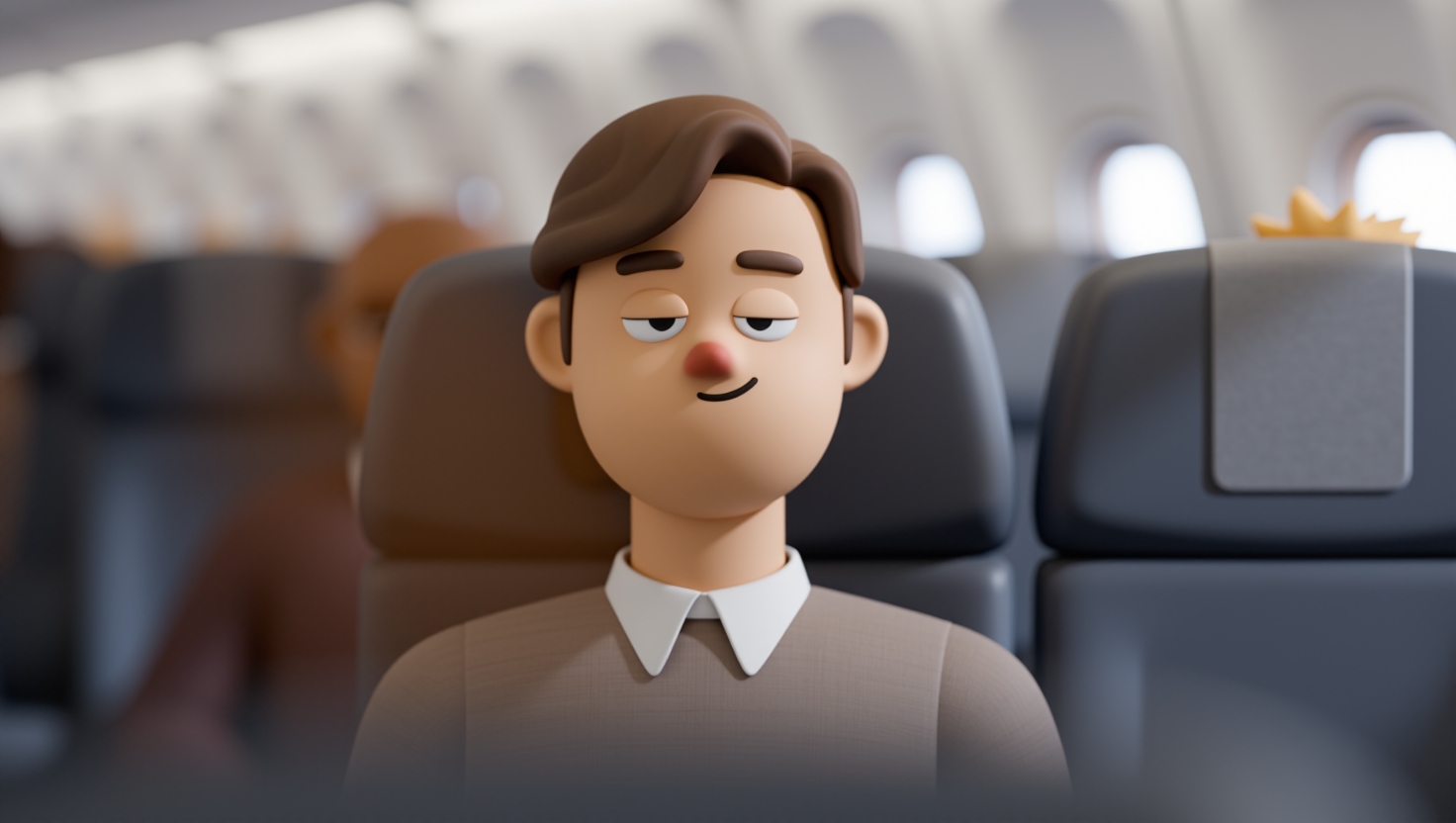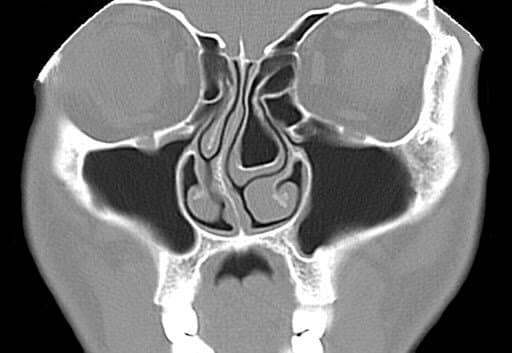Air Travel and Chronic Sinusitis: Understanding the Impact on Sinus Health
If you live with chronic sinusitis, you know just how disruptive and uncomfortable sinus issues can be. Unfortunately, the challenges don’t stop when you’re thousands of feet in the air. The impact of air travel on chronic sinusitis is a genuine concern for frequent flyers and vacationers alike. The unique atmosphere inside an airplane cabin can trigger and intensify sinus symptoms, sometimes turning a routine trip into a painful ordeal. In this guide, let’s explore how air travel affects chronic sinusitis, what you can expect during and after a flight, and practical strategies to help you manage sinus discomfort on your next journey.
1. Introduction
What is Chronic Sinusitis?
Chronic sinusitis is a persistent inflammation of the sinus cavities lasting more than 12 weeks. Unlike acute sinus infections that resolve quickly, chronic sinusitis often continues for months or years, causing ongoing discomfort. People suffering from chronic sinusitis commonly experience symptoms such as constant nasal congestion, facial pressure or pain, sinus headaches, postnasal drip, and sometimes a reduced sense of smell. These symptoms can severely disrupt daily activities, making it difficult to breathe comfortably, sleep well, or even enjoy meals.
Why Air Travel Matters for Sinus Health
Air travel places unique stress on your body, particularly your sinuses, in ways not encountered at ground level. Rapid changes in cabin pressure during takeoff and landing, combined with persistently dry, recycled cabin air and constant exposure to new germs in a confined environment, can exacerbate sinus symptoms. Most people’s sinuses naturally equalize these pressure shifts through small openings called ostia between the sinus cavities and nasal passages. However, with chronic sinusitis, inflammation or blockage of these ostia can hinder this process.
Understanding how these factors interact with chronic sinusitis is critical. Being aware of potential triggers and adopting preventive measures can help you avoid severe flare-ups, allowing for a more comfortable and safer travel experience.
Preparing for air travel with sinusitis can make all the difference in your comfort and health.
2. How Air Travel Affects Chronic Sinusitis
2.1 Effects of Cabin Pressure Changes on Sinuses
During ascent and descent, the cabin pressure inside an airplane changes quickly, sometimes dramatically. Most people’s sinuses adjust to these shifts via the ostia, but when these are inflamed or blocked, air cannot pass freely. Imagine trying to blow air through a straw that’s partially pinched—air gets trapped, building pressure inside the sinuses.
This pressure imbalance causes a condition called sinus barotrauma, characterized by painful pressure sensations or mild inflammation in the sinus tissues. This discomfort is often most intense during landing but can occur whenever pressure changes rapidly.
2.2 Common Sinusitis Symptoms Triggered by Air Travel
Many travelers with chronic sinusitis report significant discomfort during and after flights, including increased congestion, throbbing facial pain, headaches that feel like pressure around the eyes and cheeks, and even ear discomfort due to linked sinus and ear passages. For example, Sarah, a chronic sinusitis patient, shared, “I’ve had flights where my face felt so heavy and painful, landing was almost unbearable.” These symptoms often appear during the flight and can linger for hours or days after landing, slowing recovery and impacting your ability to enjoy your destination or return home refreshed.
Recognizing these symptoms early can help you take steps to minimize discomfort.
3. Causes of Sinus Discomfort During Flights
3.1 Barotrauma and Sinus Pressure Imbalance
Barotrauma results from a mismatch in pressure between your sinus cavities and the external environment. For people with healthy sinuses, pressure equalization occurs smoothly. With chronic sinusitis, inflamed or swollen sinus passages act as a barrier, preventing air from moving freely. This causes pressure to build inside the sinuses, leading to pain, a sensation of fullness, and sometimes mild tissue inflammation. Takeoff and landing typically worsen these effects due to rapid cabin pressure changes.
3.2 Dry Cabin Air and Its Role in Sinus Inflammation
Airplane cabins maintain humidity levels as low as 10-20%, compared to comfortable indoor humidity of 30-50%. Such dry air quickly dehydrates the mucous membranes lining your nasal passages and sinuses. Think of it as driving on a dry, dusty road without proper lubrication—the nasal passages become irritated, inflamed, and more prone to congestion. For chronic sinusitis sufferers, this dryness compounds existing inflammation and discomfort, leading to symptoms like burning, stinging, and persistent nasal blockage.
3.3 Exposure to Germs and Sinus Infection Risk
Airplanes are enclosed spaces with many people in close proximity, increasing exposure to viruses, bacteria, and other germs. Cabin air is recycled and passed through HEPA filters, which help reduce but do not eliminate exposure to pathogens. Shared surfaces like tray tables and armrests can harbor microorganisms. For chronic sinusitis patients, whose sinuses may already have impaired drainage, this increased contact with pathogens raises the risk of developing secondary infections or worsening existing inflammation. Catching a respiratory virus during or after a flight may trigger a sinus flare-up, prolonging symptoms significantly (University Hospitals, 2024; Ohio Sinus Institute, 2019; Healthline, 2023).
Maintaining hygiene and cautious behavior can reduce infection risks while flying.
4. Symptoms of Sinusitis During and After Air Travel
People with chronic sinusitis often experience the following symptoms when flying:
- Nasal congestion and swelling, which worsen during takeoff and landing
- Sinus headache and facial pressure, described as tightness or heaviness around the cheeks or forehead
- Nasal dryness and irritation, with burning or stinging sensations inside the nose
- Ear fullness, popping, or discomfort, related to Eustachian tube dysfunction caused by pressure changes
- Lingering fatigue or malaise as the body copes with ongoing inflammation
If you experience severe symptoms—such as intense pain, significant facial swelling, or fever—it is advisable to postpone air travel and seek medical evaluation promptly. Ignoring these signs might lead to complications requiring more intensive treatment.
Early recognition of severe symptoms is essential for safe management.
5. Prevention Tips for Managing Sinus Health When Flying
While you cannot completely eliminate risks associated with air travel, several proactive steps can dramatically reduce sinus discomfort before, during, and after your flight.
5.1 Pre-Flight Preparations
- Stay Well-Hydrated: Dehydration worsens sinus dryness and mucus thickening, so drink plenty of water for several hours before and during your flight. A well-hydrated mucous membrane helps prevent irritation (Hydration and Sinuses: How Much Water Do You Need?).
- Use Saline Nasal Sprays: Regular saline sprays moisturize nasal tissues and help clear thick mucus. Applying saline sprays about 30 minutes before boarding can prepare your nasal passages for the dry air environment (When to Use Saline Sprays for Nasal Relief).
- Medications: If prescribed by your doctor, using intranasal steroids or decongestants before your flight can reduce inflammation and swelling, facilitating pressure equalization. Do not start any new medications without medical advice.
- Travel Considerations: Avoid flying when experiencing an active sinus infection or acute sinusitis flare-up, as pressure changes can worsen symptoms and increase pain (Should You Fly with a Sinus Infection? - Healthline).
5.2 In-Flight Strategies
- Equalize Pressure: Chewing gum, swallowing frequently, or yawning during ascent and descent encourages opening of sinus and ear passages, helping with pressure equalization.
- Short-Term Use of Decongestant Sprays: If congestion arises mid-flight, a single dose of nasal decongestant spray may provide relief. Limit use to no more than 3 consecutive days to avoid rebound congestion.
- Warm Compress: Applying a warm compress (such as a heated towel or mask) over the cheeks and forehead can soothe inflamed sinuses and relieve pressure buildup.
- Avoid Dehydrating Beverages: Skip alcohol and caffeinated drinks since they promote dehydration, worsening dryness and irritation inside your nose.
5.3 Post-Flight Care
- Nasal Irrigation: Upon arrival, gently rinse your nasal passages with saline solutions or use a neti pot to clear mucus and allergens accumulated during the flight.
- Monitor Symptoms: Watch for early signs of worsening sinusitis, such as increased pain or swelling, and manage promptly with hydration, rest, and medications as needed.
For more detailed guidance on preventing sinus pressure during flights, see Managing Sinus Pressure While Flying: ENT Tips.
Proactive care before, during, and after flying reduces the chance of sinus flare-ups.
6. Treatment Options for Sinusitis Flare-ups Related to Flying
6.1 Over-the-Counter Remedies
- Pain Relievers: Over-the-counter options like ibuprofen or acetaminophen can effectively relieve sinus headaches and facial pain.
- Short-Term Decongestants and Nasal Steroid Sprays: These reduce inflammation and swelling but should be used cautiously and not exceed recommended durations.
- Saline Rinses: Keep nasal passages clear and moist, reducing congestion and promoting healing.
6.2 When to Seek Medical Advice
Consult a healthcare provider, preferably an ENT specialist, if you experience:
- Symptoms persisting beyond 10 days or worsening after initial improvement
- Severe pain or swelling around the face or eyes
- Fever suggesting a bacterial infection
- Intense sinus pressure, vision changes, or unexplained nosebleeds
Early intervention can prevent complications and may include prescription treatments or procedures tailored to your chronic sinus condition. For personalized treatment and ongoing management, visit Chronic Sinusitis Overview and Treatment.
Timely medical evaluation helps prevent serious complications.
7. Frequently Asked Questions (FAQs)
Can flying worsen chronic sinusitis permanently?
Air travel may trigger or worsen acute flare-ups due to pressure changes and dry air but typically does not cause lasting damage. Repeated barotrauma episodes may increase sensitivity or discomfort in some individuals, though permanent damage is uncommon.
Is it safe to fly with a sinus infection?
Flying with an active sinus infection is generally discouraged since pressure changes can increase pain and risk of complications. It’s best to delay travel until symptoms improve (Healthline, 2023).
What are the best nasal sprays to use before flying?
Saline nasal sprays are the safest option for moisturizing and clearing nasal passages. Certain decongestant sprays may be beneficial but should only be used short-term and under medical guidance (When to Use Saline Sprays for Nasal Relief).
How does altitude affect sinus pressure?
Higher altitudes mean lower external air pressure, challenging blocked or inflamed sinuses to equalize pressure. This often causes pain and congestion during takeoff and landing.
Are there airline or seat choices that help reduce sinus discomfort?
Choosing an aisle seat can provide easier bathroom access for hydration and nasal spray use. Some travelers find sitting near the front, where airflow circulation may be better, can also help.
8. Conclusion
The effects of air travel on chronic sinusitis sufferers are significant but manageable. Understanding how cabin pressure changes, dry air, and exposure to germs affect your sinuses is the first step toward minimizing discomfort. With thoughtful preparation before your flight, proactive in-flight strategies, and attentive post-flight care, you can reduce the risk of sinus flare-ups and enjoy smoother journeys.
Should sinus issues complicate your travel plans or quality of life, consulting an ENT specialist can provide personalized treatment options designed for chronic sinus sufferers. To learn more about managing your sinus health and the latest treatment advances, visit the Sleep and Sinus Centers of Georgia’s chronic sinusitis resource page.
Book an appointment today to explore your sinus health in detail and find relief tailored just for you. Safe travels and clear skies!
Suggested Internal Links
- Chronic Sinusitis Overview and Treatment
- Managing Sinus Pressure While Flying: ENT Tips
- When to Use Saline Sprays for Nasal Relief
Citations
- University Hospitals. Travel Tips for Sinus Sufferers. (2024). https://www.uhhospitals.org/blog/articles/2024/12/travel-tips-for-sinus-sufferers
- Ohio Sinus Institute. Air Travel Can Impact Sinus Health. (2019). https://ohiosinus.com/air-travel-can-impact-sinus-health-can
- Healthline. Should You Fly With a Sinus Infection? (2023). https://www.healthline.com/health/should-you-fly-with-a-sinus-infection
Disclaimer:
This article is for educational purposes only and is not medical advice. Please consult a qualified healthcare provider for diagnosis and treatment.
Don’t let allergies slow you down. Schedule a comprehensive ENT and allergy evaluation at Sleep and Sinus Centers of Georgia. We’re here to find your triggers and guide you toward lasting relief.





